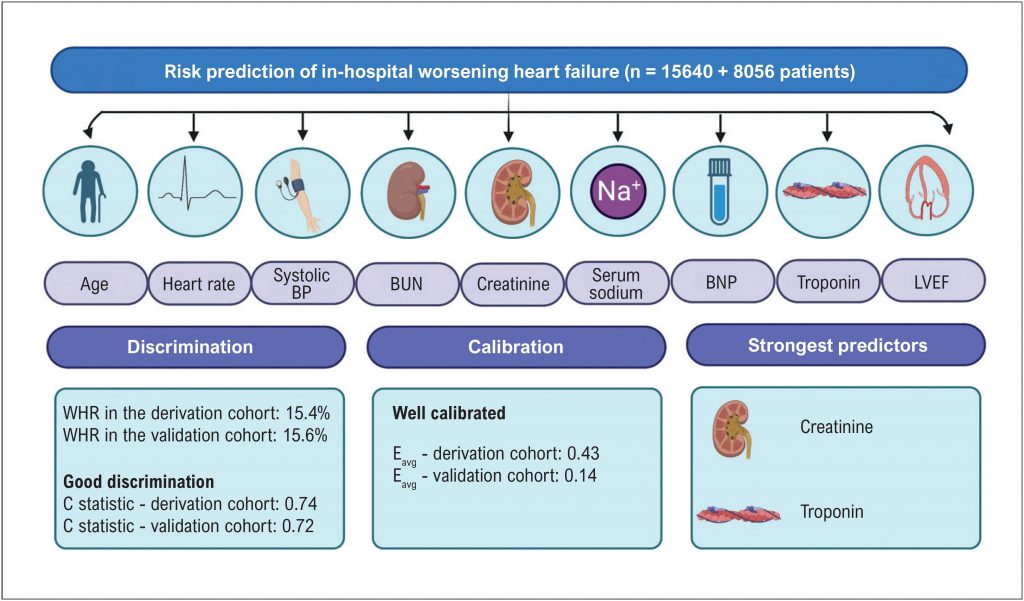Arq. Bras. Cardiol. 2023; 120(8): e20230525
In-Hospital Worsening Heart Failure: Can We Predict It At Admission?
This Short Editorial is referred by the Research article "Use of the ADHERE Risk Model as a Predictor of Risk of in-Hospital Worsening Heart Failure in a Cohort".
Acute decompensated heart failure (ADHF) is a risk marker in the patient’s heart failure (HF) journey. It may be the initial presentation (de novo HF) or an acute exacerbation of chronic HF. Most patients with ADHF present to the emergency department (ED) with congestion and usually respond well to treatment with diuretics. However, some high-risk patients may have a complicated course during hospitalization, including in-hospital worsening HF (WHF), defined as persistent or worsening signs and symptoms requiring an escalation in therapy. Identifying such patients is important since they are at greater risk of in-hospital and post-discharge events.,
In the early 2000s, ADHF began to attract the attention of many researchers in the field of HF. In that period, a large registry of patients with ADHF – the ADHERE Registry – was set up in the United States of America. The ADHERE Registry gave enormous contributions to the field of ADHF. They taught us about these patients’ clinical characteristics and outcomes, but more importantly, they created prediction rules for patients admitted with ADHF. They initially reported a regression tree analysis, using three simple variables to predict in-hospital mortality – blood urea nitrogen (BUN), creatinine, and systolic blood pressure. Two years later, they reported the value of B-type natriuretic peptide (BNP) in predicting in-hospital mortality. In 2016 they developed and validated a model to predict in-hospital WHF, which included clinical variables (age, heart rate, systolic blood pressure), laboratory tests (BUN, creatinine, serum sodium), biomarkers (BNP and troponin), and the left ventricle ejection fraction (LVEF). Their model had good discrimination, with c-statistics of 0.74 and 0.72 for the derivation and validation cohorts, respectively, as shown in . Nevertheless, discrimination was modest in the external validation cohort (ASCEND-HF study) (c-statistic 0.63).
[…]
Keywords: Heart Decompensation; Heart failure; Patient Admission; Prognosis; Risk Factors
850

